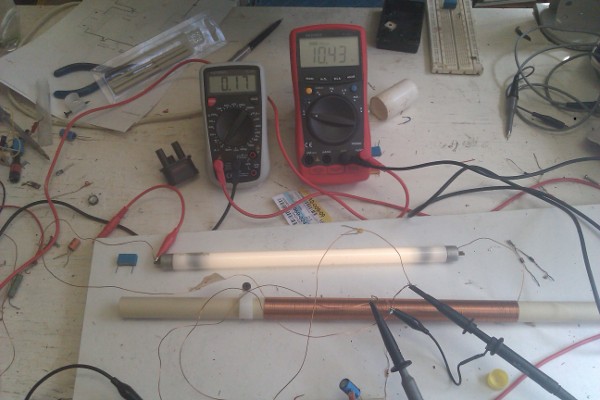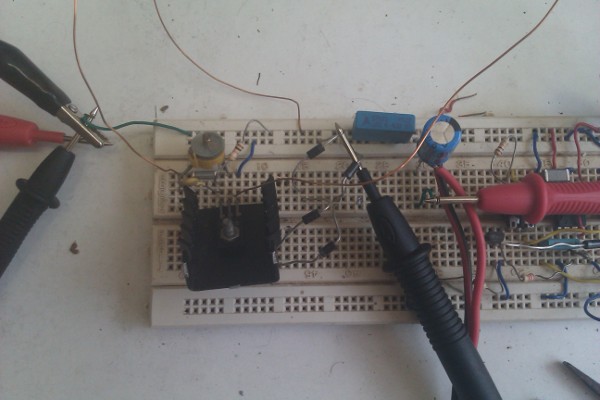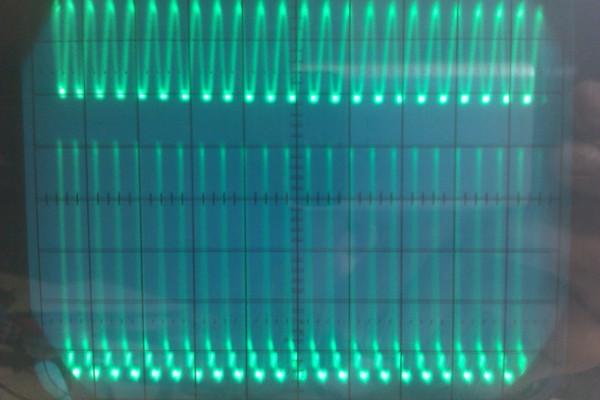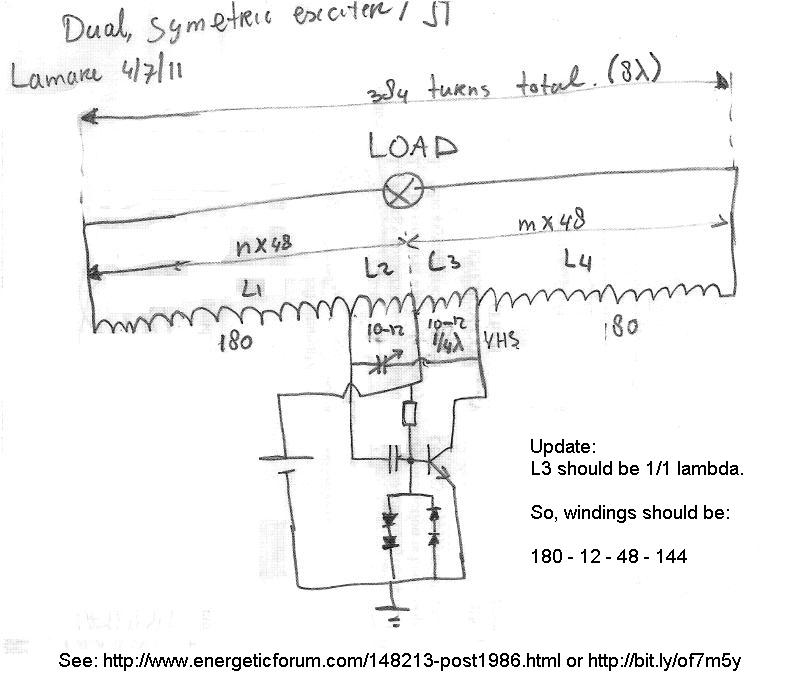
@dR - There are some very different ideas coming forward from yourself and Lamare...that have reignited my own experiments.
Of interest might be that tower I used in the last video. You may have noted the secondary being the very scruffy 2 turn, but that it's sat way high up the tower. This is the same one as used in my Hoppity helicopter experiments and runs best for current conversion upside down. There are ferrite pieces to 1" down within the top, underneath those is some foam to stop it all falling to the bottom. For some reason, the output increased dramatically.
One idea for room lighting using this sort of thing might well be introduced when we have funds to finish our livingroom. Being as the system needs only one wire, it would run neatly along the top of skirting boards all around the room. Then, any tube could be easily attached at any place desired, by a magnet or other means. No wall outlets needed, no mains voltage and easily possible to be a free soft lighting solution when using solar power and a 12V car battery

Toranarod was talking of similar things in the Muller dynamo thread and it's weird how things mix together from different directions, same as MonsieurM mentioned at the top of this page.










 It was just a matter of swapping the trigger polarity, and the stupid thing is I automatically did that without even thinking about it to get it work as an SG
It was just a matter of swapping the trigger polarity, and the stupid thing is I automatically did that without even thinking about it to get it work as an SG  Oh well.
Oh well. 



Leave a comment: